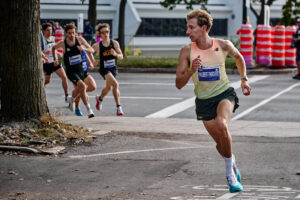Running the Mile: Between Sprint and Endurance, a Unique Distance

We all know the classic race distances: 5K, 10K, the half-marathon, and the ultimate challenge—the marathon. But today, we’re diving into a distance that’s far less known to the general public, one that made its debut in our event lineup last year: the Mile. These 1,609.344 metres carry a lot of history—and it’s no small feat. It’s actually the only non-metric distance that World Athletics has officially recognized for world records since 1976.
A Quick Trip Back in Time
When track and field switched to the metric system in the 1900s, the Mile stood its ground. Its golden era? The 1950s, when the world was captivated by what seemed like an impossible feat: running the Mile in under four minutes.
On May 6, 1954, British runner Roger Bannister shattered that barrier, proving that what once seemed impossible was, in fact, achievable. Today, the world record belongs to Hicham El Guerrouj, who ran an astonishing 3:43.13. Even El Guerrouj himself acknowledges the challenge of this distance: “It’s completely different from the 1500 m. Running it well requires incredible strength—both physical and mental.”

Here in Canada, we have our own Mile champion: Charles Philibert-Thiboutot, who also serves as an ambassador for the Beneva Montreal Marathon. He even represented Canada in the 1,500 m (the Mile’s metric cousin) at the Paris Olympics last summer.
A Biology Lesson
Running the Mile is about balancing the speed of a sprinter with the endurance of a marathoner. But what truly sets this distance apart is what happens inside your body while you run.
In the first moments of the race, your body relies primarily on the anaerobic lactic system, using glucose for immediate energy without oxygen. Then comes a crucial shift to the aerobic system, where your body must sustain high intensity while transitioning to a different metabolism.
This transition is demanding because it engages both fast-twitch and slow-twitch muscle fibres. The fast-twitch fibres generate explosive power for the start and finish, while the slow-twitch fibres provide the endurance needed to maintain speed. Mastering this delicate balance is what makes the Mile such a technical and tactical race.
Ready to Take It On?
It’s easy to think that the Mile is just for pros. We see elite runners at the start line, decked out in race kits that just look fast… It can be intimidating, we get it!
But that’s exactly why we’re thrilled to bring this event to a public race—so everyone can try it in a fun and welcoming environment. Who knows? You might just discover a new passion.
Think of it this way: this race gives you the chance to run the same legendary distance as track & field icons—but in your own way. It’s a chance to experience something special, challenge yourself, and share an unforgettable moment with fellow running enthusiasts.
So, see you at the start line? Come and write your own chapter in the history of this iconic distance!
21K de Montréal
The Mile | April 26
Registration
Marathon Beneva de Montréal
The Mile | September 19
Registration
Published on 02/10/2025
CATEGORY Training



